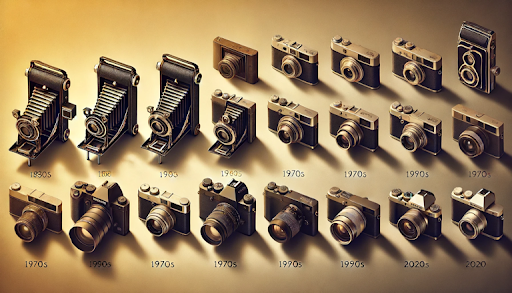The Evolution of the Camera: From Obscura to Digital Mastery
The camera, an invention that has transformed the way we capture and share moments, has a rich history of innovation and evolution. This journey, from the rudimentary pinhole cameras to today's sophisticated digital devices, highlights the ingenuity and perseverance of inventors over the centuries.
The Early Days: Camera Obscura
The origins of the camera can be traced back to ancient civilizations. The concept of the camera obscura, a darkened room with a small hole or lens at one side through which an image is projected onto a wall or screen, was known to scholars as far back as the 5th century BCE. This phenomenon was described by the Chinese philosopher Mozi and later by the Greek philosopher Aristotle. However, it wasn’t until the Renaissance that the camera obscura became a tool for artists to create accurate drawings and paintings.
The Birth of Photography: The Daguerreotype
The first significant leap towards modern photography came in the early 19th century with the invention of the daguerreotype. In 1839, Louis Daguerre, a French artist and chemist, introduced a method that captured images on silver-plated copper sheets. The daguerreotype was the first practical photographic process and quickly gained popularity. Although the images were delicate and could not be reproduced, the clarity and detail were remarkable for the time.
Advancements in Photographic Processes
The mid-19th century saw several advancements that improved photographic technology. In 1841, William Henry Fox Talbot introduced the calotype process, which used paper coated with silver iodide. This process allowed for multiple copies of an image to be made from a single negative, laying the foundation for modern photography.
By the late 19th century, George Eastman revolutionized photography with the introduction of roll film and the Kodak camera. Eastman’s Kodak camera, launched in 1888, was user-friendly and portable, making photography accessible to the general public. The slogan “You press the button, we do the rest” encapsulated the simplicity of this groundbreaking invention.
The Rise of Instant Photography: Polaroid
In the mid-20th century, Edwin Land introduced another game-changer: the Polaroid instant camera. First released in 1948, the Polaroid camera allowed users to take a picture and have a developed print in their hands within minutes. This instant gratification was a hit, and Polaroid cameras became immensely popular, especially in the 1960s and 1970s.
The Digital Revolution
The late 20th century ushered in the digital revolution, fundamentally changing photography once again. In 1975, Steven Sasson, an engineer at Eastman Kodak, invented the first digital camera. Although it was cumbersome and the image quality was low, this innovation marked the beginning of a new era.
By the 1990s, digital cameras had become more practical and affordable. The ability to store thousands of images on a memory card, the instant review and deletion of photos, and the convenience of sharing digital images via the internet contributed to the rapid adoption of digital photography.
The Smartphone Era
In the 21st century, the convergence of digital cameras and smartphones revolutionized the way we capture and share images. The first camera phones appeared in the early 2000s, and by the 2010s, smartphones with high-resolution cameras had become ubiquitous. With advanced features like multiple lenses, optical zoom, and sophisticated software for image processing, smartphones have made photography more accessible and versatile than ever before.
The Future of Photography
The evolution of the camera continues as technology advances. Innovations like artificial intelligence (AI), augmented reality (AR), and virtual reality (VR) are already influencing the future of photography. AI-powered cameras can enhance image quality, identify scenes, and even create artwork from photographs. AR and VR are opening up new possibilities for immersive photography experiences.
From the simple camera obscura to the powerful digital cameras in our pockets, the evolution of the camera is a testament to human creativity and technological progress. As we look to the future, one thing is certain: the camera will continue to evolve, capturing the essence of our world in ever more remarkable ways.




Comments
Post a Comment